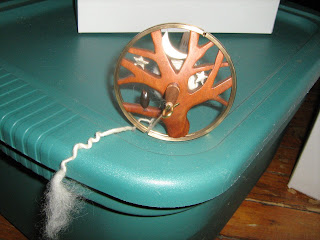James Baldwin and American Identity Issues
James Baldwin’s address “Notes on a Hypothetical Novel” speaks about the American identity. In order to speak about the problems with this American identity, Baldwin frames his points within the idea of writing a novel using his own life for examples and inspiration. Baldwin begins by telling his audience “We’ve been talking about writing for the last two days, which is a very reckless thing to do, so I shall be absolutely reckless and pretend that I’m writing a novel in your presence” (141). Why is talking about writing reckless? Is it because writing allows for an intimate connection between reader and author, and so writing is a sacred practice that enables people to cross over social and class barriers that otherwise would be blocking their paths? I think this is the reason. In the 1950’s when segregation was still a serious problem, writing could be the link between groups of people that may have very little contact with one another. In this essay, I think James Baldwin is asking his readers or listeners to put down their walls and rethink the American identity, as it blinds them to their actual, personal identities.
Baldwin paints the American citizen as confused about his or her place in the world, talents, and class status. He pushes the readers of this piece to see that we are not who we imagine ourselves to be, “…to try and find out what Americans mean is almost impossible because there are so many things they do not want to face” (151). This is particularly true of segregation and civil rights. Many white Americans probably believed that they were supporters of African-American rights and freedoms but in reality, did nothing to allow other people to see this. People cover up their true selves using class, race, education, and gender stereotypes as their means. Soon, it will become easier to believe the stereotype that one has painted for the world than to reach deeper and pull out one’s personal and private beliefs. In “Notes on a Hypothetical Novel” the most memorable quotes was:
There is an illusion about America, a myth about America to which we are clinging which has nothing to do with the lives we lead and I don’t believe that anybody in this country who has really thought about it or really almost anybody who has been brought up against it—almost all of us have one way or another—this collision between one’s image of oneself and what one actually is is always very painful and there are two things you can do about it, you can meet the collision head-on and try and become what you really are or you can retreat and try to remain what you thought you were, which is a fantasy, in which you will certainly perish. (153)
Baldwin urges his readers to break down who they thought they were and become who they really are. Is this a positive action? For the most part, I would say yes. But I also think that some people pretend to be better people than they truly are. In this case, it seems important to work on merging the self that one pretends to be, and the self which one really is. And why is this confusion an American trait, as Baldwin claims it is. Clearly we can look to our history and see that America was created (the idea of America, anyway) by people who believed so strongly in their own religion that they were forced to move from their home to a new physical space on order to safely practice those religions.
And then things become complicated. As race enters the picture, our “all- encompassing, all-inclusive” American identity falls to pieces. For America is a “melting pot” of people who have been at odds against one another for as long as “Americans” have existed on this piece of land. It is strange to look at the history of this place and feel as if we have accomplished much in the way of protecting or even respecting human life. But I also do not want to become that tacky American who hates America. I do not hate America. I am, however, at odds with my American identity and I don’t know whether I should be embracing the person I think I am to improve myself, or throwing that person away in order to become my true self. As a Vermonter, my exposure to racial diversity has been limited, and I am ignorant of much of the slang and rhetoric of minority groups. I am very possibly naive to prejudice and just how much prejudice there is left in the world. But I am not racist, and I seek to learn as much as I can about culture and identity…because it interests me, and I can feel it making me grow.
In my small town of five hundred, there was an African drum in every house and a great hunger for textures and colors and rituals from other places. It is because of this odd community that I learned anything about peoples other than the backwoods artists and laborers that make up Saxtons River. Thus, I cannot call myself racist, because I am not…I am a white girl from Vermont rather than one who can claim a strong attachment to the identity of an American. And although I have traveled, I identify less and less with other Americans that I meet. Maybe because America is so large, or so fractured, or so full. I am uncertain of how to remedy this dis-attachment to my own country, but I suppose it would begin with working on what America means to me.













